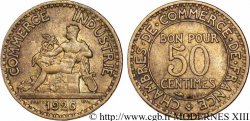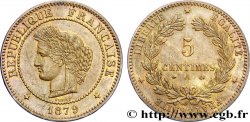fme_423310 - III REPUBLIC Médaille du Palais Bourbon
Not available.
Item sold on our e-shop (2018)
Price : 280.00 €
Item sold on our e-shop (2018)
Price : 280.00 €
Type : Médaille du Palais Bourbon
Date: 1898
Mint name / Town : 75 - Paris
Metal : bronze
Diameter : 72 mm
Orientation dies : 12 h.
Engraver BOURGEOIS Léon Max (1839-1901)
Weight : 173 g.
Edge : lisse + corne BRONZE
Coments on the condition:
Médaille dans sa boîte en cuir marron, inscrite CENTENAIRE de L’INSTALLATION de la CHAMBRE DES DEPUTES AU PALAIS-BOURBON (grande initiales dorée RF)
Obverse
Obverse legend : XXI JANVIER / MDCCCLXXXXVIII / CENTENAIRE / DE LA / CHAMBRE/ DES/ DÉPUTÉS / AU / PALAIS BOURBON .
Obverse description : Légende en 9 lignes avec la façade du Palais Bourbon en arrière plan ; une médaille avec Marianne et un cartouche.
Reverse
Reverse legend : LIBERTÉ LIBERTÉ CHÉRIE COMBATS AVEC TES DÉFENSEURS // 11 PLUVIOSE AN VI / INAUGURATION DU PALAIS NATIONAL / DU / CONSEIL DES CINQ CENTS.
Reverse description : Scène d’inauguration en l’an 6.
Commentary
La médaille reproduite au droit semble correspondre à l’avers de la fme_423309.
Le palais Bourbon est le nom communément donné au bâtiment qui abrite l’Assemblée nationale française, situé sur le quai d'Orsay (l'hôtel du ministre des Affaires étrangères est mitoyen, mais les deux ensembles architecturaux ne communiquent pas), dans le 7e arrondissement de Paris, dans l’enfilade du pont de la Concorde et de la place de la Concorde. Il est gardé par le 2e régiment d'infanterie de la Garde Républicaine.
Le Conseil des Cinq-Cents est l'une des deux assemblées législatives françaises du Directoire, avec le Conseil des Anciens. Elle est instituée par la Constitution de l'an III, adoptée par la Convention thermidorienne le 22 août 1795, et entre en vigueur le 23 septembre 1795. Le Conseil des Cinq-Cents siège dans la salle du Manège située dans l'actuelle rue de Rivoli à partir du 9 octobre 1795, puis au Palais Bourbon à partir du 21 janvier 1798.
Frédéric Euzière est un homme politique français né le 20 mai 1842 à Saint-Jeannet (Alpes-Maritimes) et décédé le 4 février 1920, dans la même ville.
Avocat à Nice, il s'installe à Gap en 1862. Militant républicain, il est maire de Gap de 1878 à 18961 et conseiller général du canton de Gap en 1880 et conseiller général du canton de Chorges en 1910. Il est président du conseil général de 1899 à 1919. Il est député des Hautes-Alpes de 1889 à 1910, siégeant à gauche..
Le palais Bourbon est le nom communément donné au bâtiment qui abrite l’Assemblée nationale française, situé sur le quai d'Orsay (l'hôtel du ministre des Affaires étrangères est mitoyen, mais les deux ensembles architecturaux ne communiquent pas), dans le 7e arrondissement de Paris, dans l’enfilade du pont de la Concorde et de la place de la Concorde. Il est gardé par le 2e régiment d'infanterie de la Garde Républicaine.
Le Conseil des Cinq-Cents est l'une des deux assemblées législatives françaises du Directoire, avec le Conseil des Anciens. Elle est instituée par la Constitution de l'an III, adoptée par la Convention thermidorienne le 22 août 1795, et entre en vigueur le 23 septembre 1795. Le Conseil des Cinq-Cents siège dans la salle du Manège située dans l'actuelle rue de Rivoli à partir du 9 octobre 1795, puis au Palais Bourbon à partir du 21 janvier 1798.
Frédéric Euzière est un homme politique français né le 20 mai 1842 à Saint-Jeannet (Alpes-Maritimes) et décédé le 4 février 1920, dans la même ville.
Avocat à Nice, il s'installe à Gap en 1862. Militant républicain, il est maire de Gap de 1878 à 18961 et conseiller général du canton de Gap en 1880 et conseiller général du canton de Chorges en 1910. Il est président du conseil général de 1899 à 1919. Il est député des Hautes-Alpes de 1889 à 1910, siégeant à gauche..








 Report a mistake
Report a mistake Print the page
Print the page Share my selection
Share my selection Ask a question
Ask a question Consign / sell
Consign / sell
 Full data
Full data



